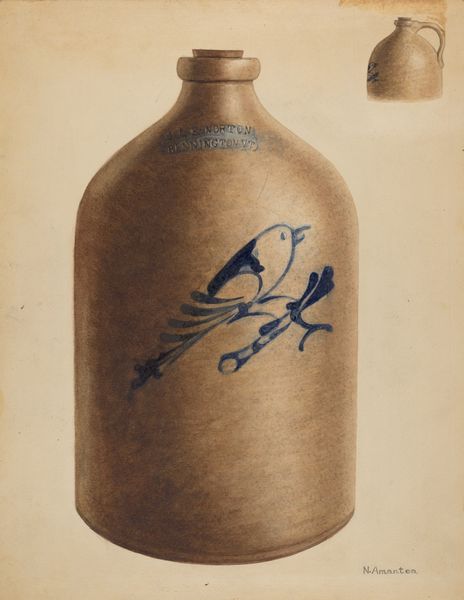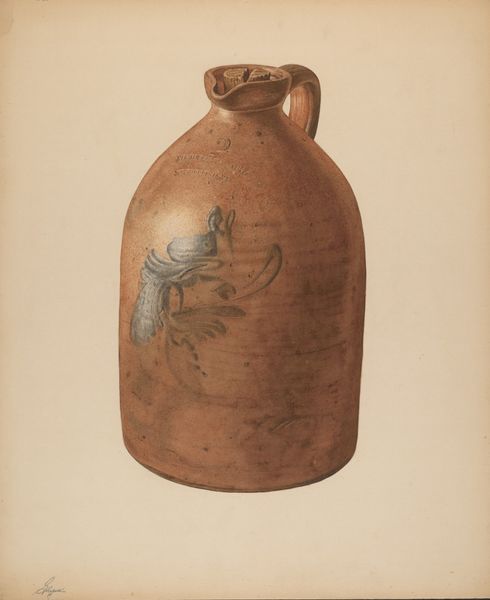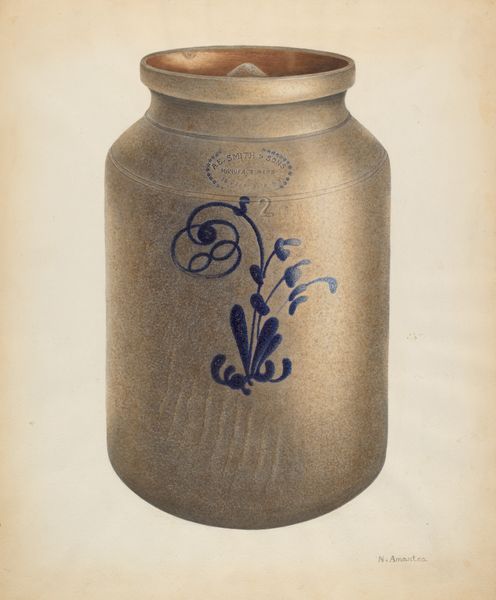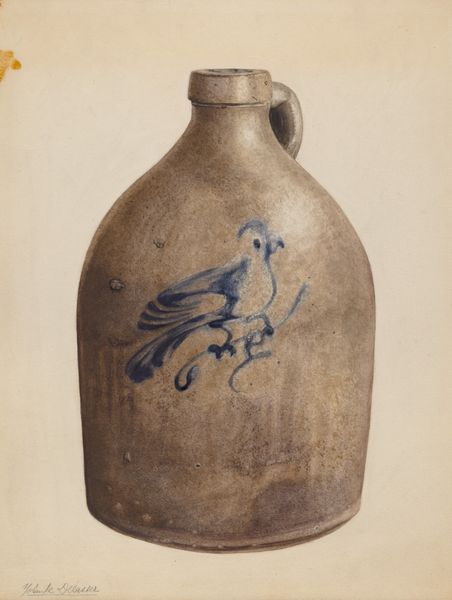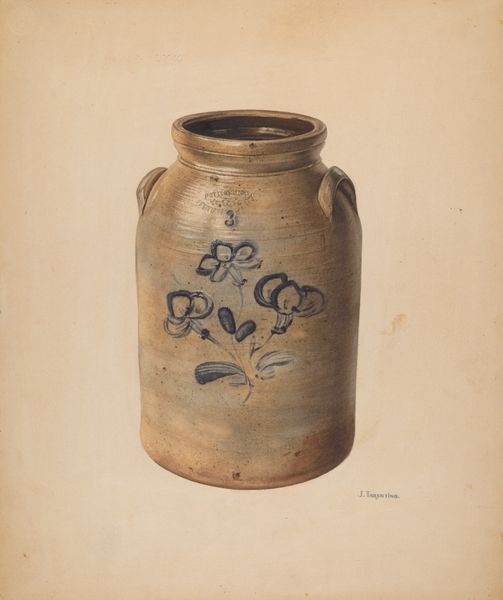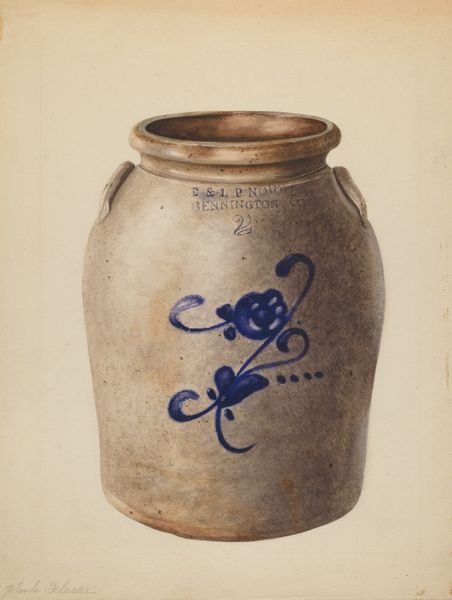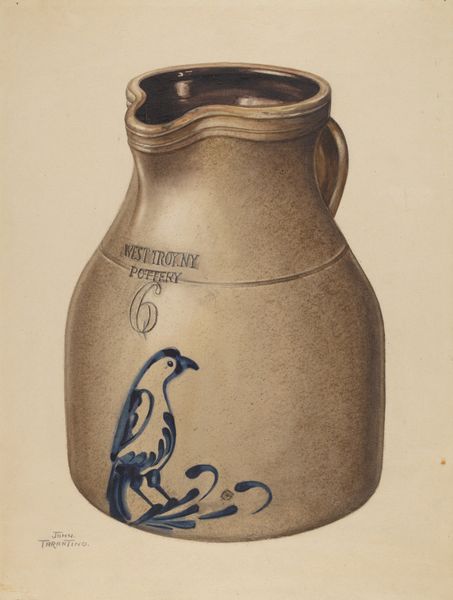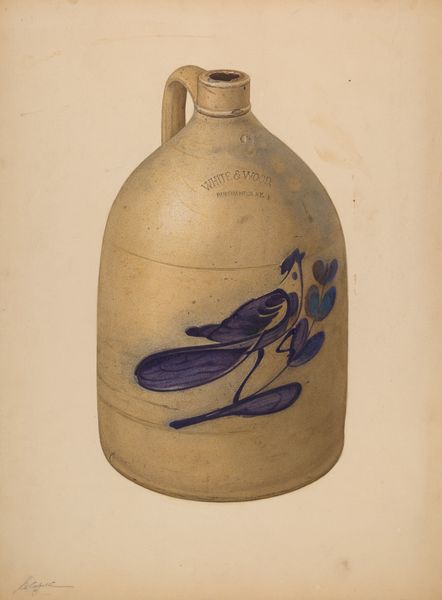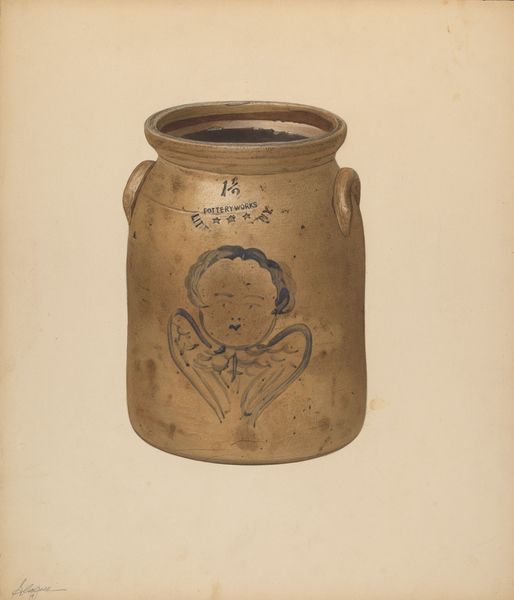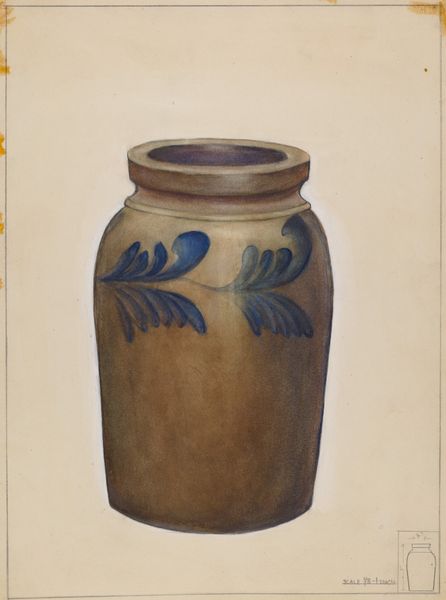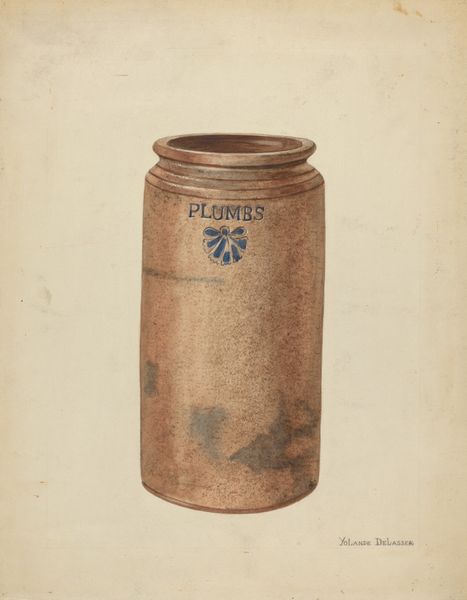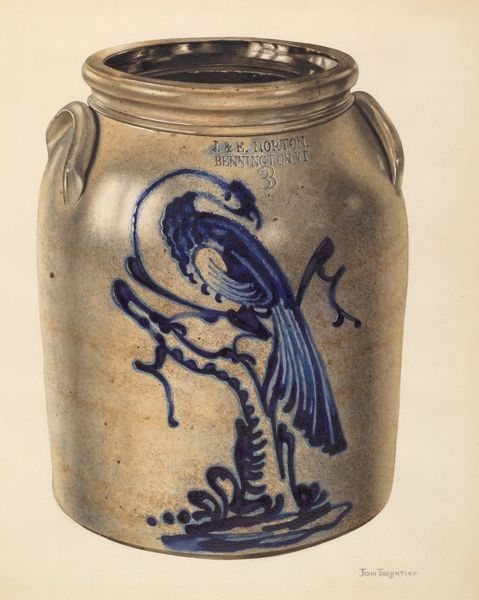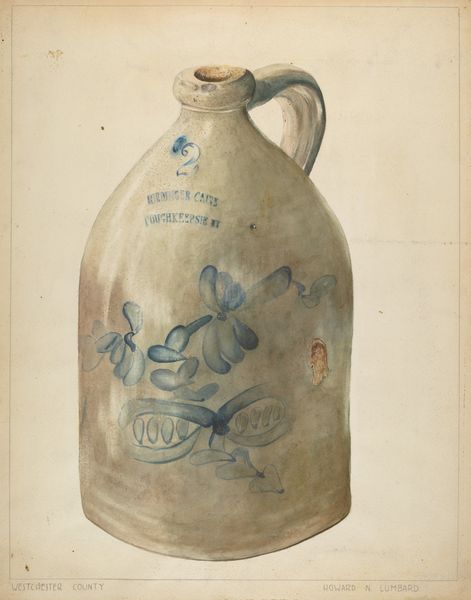
drawing, ceramic, paper, watercolor, earthenware
#
drawing
#
water colours
#
ceramic
#
paper
#
watercolor
#
earthenware
#
coloured pencil
#
watercolor
Dimensions: overall: 50.8 x 39.4 cm (20 x 15 1/2 in.) Original IAD Object: 15 7/8" high; 8 1/2" in diameter (top); 10 1/2" in diameter (base)
Copyright: National Gallery of Art: CC0 1.0
Curator: Elsie Wein's watercolor and colored pencil drawing, "Jar," created between 1935 and 1942, presents a straightforward depiction of utilitarian pottery. I'm particularly struck by the detailed rendering of a seemingly ordinary object. Editor: Yes, it’s interesting how she elevates something so functional to the level of art. It seems… nostalgic, perhaps? The drawing captures all the details like the Albany slip glaze and the cobalt decoration. What draws your eye to it? Curator: For me, it's about the layering of representation. We have a drawing of a ceramic jar, which itself is a product of labor and material processes—clay sourced, formed, fired, decorated. Wein is documenting a craft, almost acting as an archivist of material culture. Think of the conditions that impacted ceramic production during the depression, as a contrast to more classically prized artwork, then ask: where do we position craft? Editor: So it's less about the jar itself, and more about what the jar represents in terms of labor and production? Curator: Precisely. The drawing becomes a record, not just of the object, but of a particular moment in the history of its production and consumption. Is it about idealizing this rural "thing", and should we unpack that idealisation if so? Or is it simply about Wein’s labouring process, that she too worked for an end product? Editor: I hadn’t thought about it that way. It definitely shifts my understanding from simple appreciation to thinking about broader cultural implications. I wonder what this jar would have held or represented in its own time. Curator: Absolutely. It's a jumping-off point. How does Wein’s rendering connect with the lived experiences tied to these material objects? Editor: Right, considering the social context and material conditions gives the artwork a much deeper meaning. Curator: Exactly! Looking at art from this angle lets us investigate larger questions about value, labor, and cultural memory, I found the exploration fruitful. Editor: Me too! This gives me a completely fresh angle when thinking about still life, and how the value of it all shifts.
Comments
No comments
Be the first to comment and join the conversation on the ultimate creative platform.
